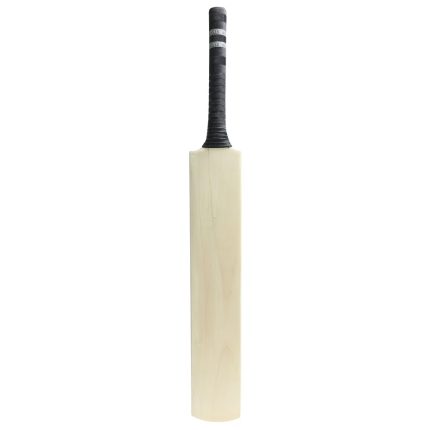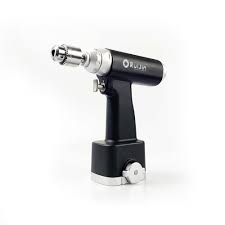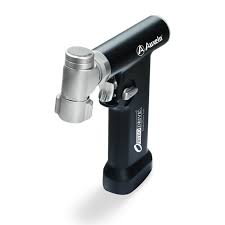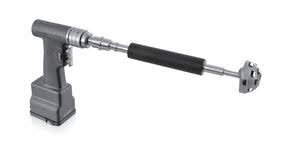Overview
A High-Speed Surgical Drill is a sophisticated powered instrument used in a wide range of surgical procedures, especially in neurosurgery, orthopedic surgery, otolaryngology (ENT), and maxillofacial surgery. Designed for rapid and precise cutting or drilling through hard tissues such as bone, these drills operate at extremely high revolutions per minute (RPM), often reaching speeds between 60,000 to 100,000 RPM. Their speed and precision make them ideal for delicate and complex surgeries where accuracy is essential.
Design and Functionality
High-speed surgical drills consist of a motorized handpiece, interchangeable burrs or drill bits, and often a console or control unit that allows surgeons to regulate speed, torque, and direction of rotation. The handpiece is ergonomically designed to ensure comfort, reduce hand fatigue, and provide excellent maneuverability during extended surgical procedures.
Most high-speed drills are compatible with a variety of burrs, including diamond-coated, carbide, and stainless steel tips. These burrs are selected based on the surgical application, such as bone cutting, sculpting, or smoothing. Many modern surgical drills also integrate irrigation systems to cool the drill site, prevent overheating, and reduce thermal injury to tissues.
Common Surgical Applications
High-speed surgical drills are widely used across several specialties, including:
-
Neurosurgery: For precise cranial drilling and skull base access during brain surgeries.
-
Orthopedic Surgery: Used to create holes for screws or implants and shape bones in joint replacements or fracture repairs.
-
ENT Surgery: Applied in delicate ear surgeries like mastoidectomy and stapedectomy.
-
Maxillofacial Surgery: Essential for jaw reconstruction, sinus surgery, and other facial procedures.
-
Dental Surgery: In complex extractions and implant placements.
Key Benefits
-
Exceptional Speed and Precision: Facilitates clean, accurate bone cuts and reduces surgical time.
-
Versatility: Compatible with a wide range of burrs for multiple surgical applications.
-
Reduced Tissue Trauma: High rotational speed enables smoother cuts with minimal pressure.
-
Integrated Cooling Systems: Minimize thermal damage to bone and surrounding tissues.
-
Ergonomic Design: Enhances control and reduces fatigue for the surgeon.
Safety and Sterilization
As with all surgical tools, maintaining hygiene is critical. Components such as the handpiece and burrs must be thoroughly cleaned and sterilized after each use. Most parts are compatible with standard autoclave sterilization, but specific instructions may vary by manufacturer. Regular maintenance ensures consistent performance and prolongs the life of the instrument.
Conclusion
The High-Speed Surgical Drill is a cornerstone of modern surgical practice, offering unmatched precision and efficiency in bone and tissue work. Its versatility and advanced design contribute significantly to improved surgical outcomes, reduced operation times, and enhanced patient safety across various medical disciplines.







Reviews
There are no reviews yet.